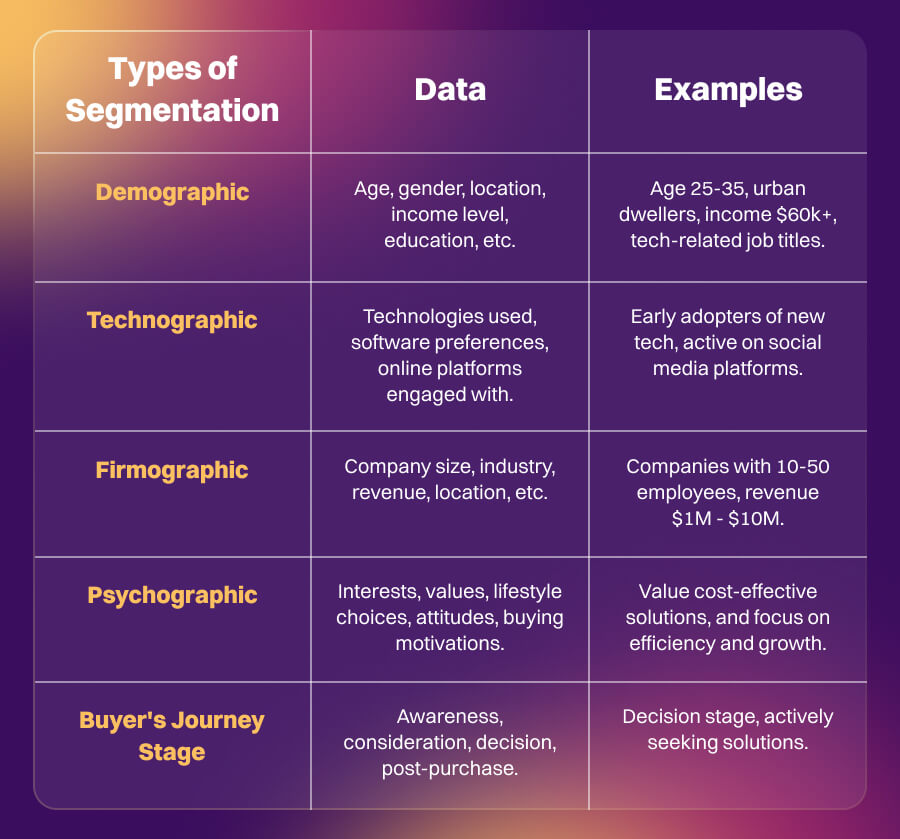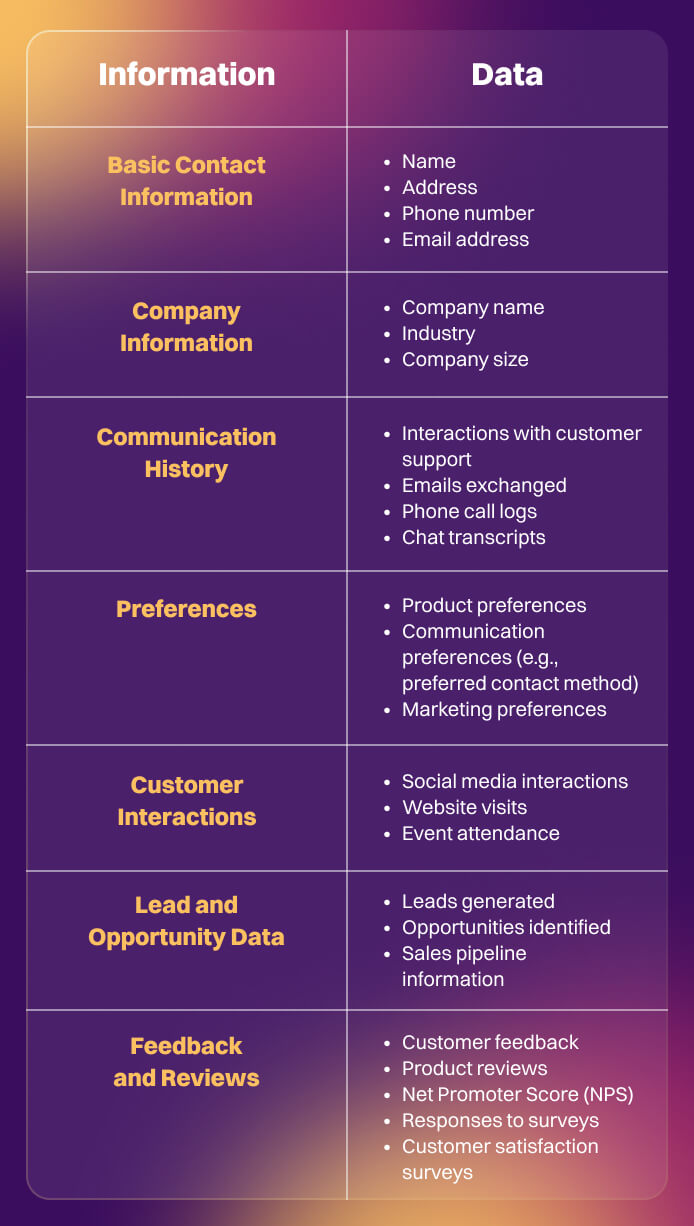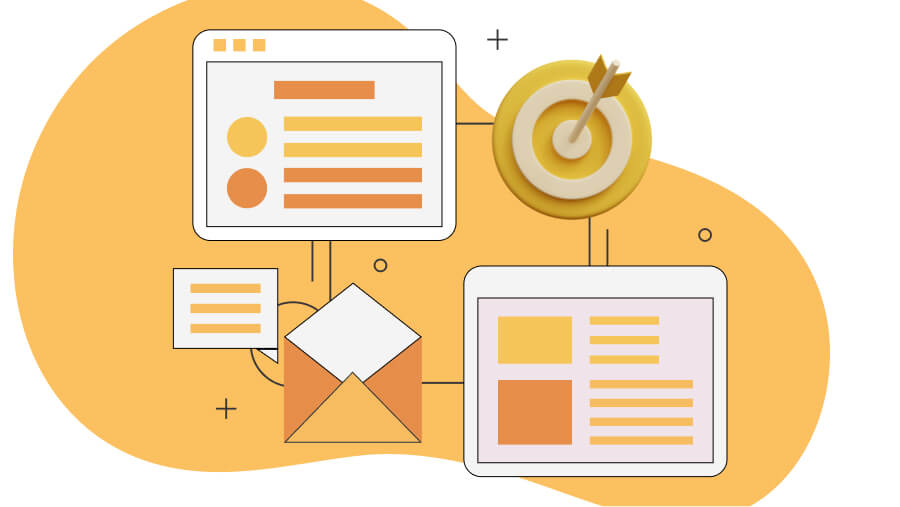
Secrets to Personalized Outbound Marketing Campaigns That Sell
In outbound marketing, your ability to tailor experiences drives your target prospects' engagement and conversions. 80% of consumers are likely to purchase when presented with personalized brand experiences.
However, this concept goes beyond addressing prospects by their first names. It involves vital elements like how you should research your audience, which channels you should use, and more.
We will cover all the needed elements here. Plus, we'll also walk you through the roles of Account-Based Marketing (ABM), Artificial Intelligence (AI), and message optimization in personalizing outreach. These approaches help you be precise and strategic in your marketing moves toward prospects.
So, let us start exploring.
Top 10 Tips for Personalizing Outbound Marketing the Right Way
82% of customers have a positive outlook on a brand with relevant content. But, prospects may see over-personalization as a threat and breach of their privacy. Thus, you need to be careful and strategic about personalizing marketing messages.
Here's how to do it:
1. Create a Detailed Buyer Persona and ICP
What's the best tip to ensure you invest your marketing budget and resources in the right direction? It's determining which organization/individuals can benefit from your offerings.
Therefore, you must define your buyer persona and ideal customer profile (ICP).
Your ICP represents the target organization, with your buyer persona being key individuals employed within that organization. Let's call these entities your target audience.
So, here are some steps to find your target audience:
-
Do Market Research
Conduct thorough market research to understand your audience's needs, preferences, and pain points. Analyze customer feedback, conduct surveys, and study industry trends.
-
Take Customer Interviews
Arrange interviews for your best customers. Ensure to include open-ended questions, such as:
“As we understand every business has its unique challenges, could you share some specific pain points or obstacles your company is currently facing?
How do you see our offering addressing these challenges, and are there any particular features or capabilities you believe would be especially beneficial?"
It'll help gather insights into their motivations, challenges, and decision-making processes.
Then, identify commonalities and patterns among your customer base.
-
Create Persona and Ideal Customer Profiles
Develop detailed persona profiles that include a fictional character representing your ideal customer. Include each persona's name, job title, challenges, goals, and critical characteristics.
Example of a Buyer Persona:
- Name: Molly
- Job Title: Marketing Manager
- Demographics: Female, 35-45 years old, based in an urban locality
- Challenges: Limited budget, time constraints, staying updated on marketing trends
- Goals: Increase brand visibility, generate quality leads, improve ROI
Illustration of an ICP:
- Company Name: XYZ Tech Solutions
- Industry: Information Technology
- Company Size: Mid-sized (100-500 employees)
- Location: Global, with a focus on North America and Europe
- Annual Revenue: $50 million - $200 million
2. Segment Your Target Audience
Get your marketing and sales team familiar with your target persona and ICP. Further, segment your target audience based on more findings about them. It'll help you share highly relevant content with your different audiences.
Some of the essential data categories are as follows:

3. Craft Customized Messages
Before you start, know that your custom messages will differ from your personalized ones. Both approaches aim to strengthen the relationship, but they do so through different strategies.
The customized message focuses on the client's overall needs and proposes a collaborative approach to customization. Meanwhile, the personalized message acknowledges the client's specific usage patterns and suggests a relevant resource to enhance their experience with the product.
Let's consider a scenario in the software industry where your company offers a project management tool. You are writing an email to the target prospect; here's how your messaging tone will differ:
| Customized Message | Personalized Message |
|
We understand that your organization has unique project management needs due to the complexity of your workflows. Our team at [Your Company] is ready to collaborate with you to customize our project management tool. It’ll seamlessly integrate with your existing systems, ensuring a smooth transition and enhanced efficiency in managing your projects. |
We've noticed that your team has been actively using [specific features] in our project management tool. We appreciate your commitment to optimizing your workflow. To further enhance your experience, we recommend exploring our upcoming webinar on advanced tips and tricks for [specific industry] professionals. Your success is important to us, and we believe this session will provide valuable insights tailored to your team's needs. |
4. Choose the Right Channels for Communication
You can try different outbound channels to reach your leads. These include:
- Cold emails
- Phone calls
- Video messages
- Podcasts
- Direct mail
But, you must choose the right channels based on what your different audiences prefer. And it increases your message's likelihood of reaching and resonating with your prospects.
To choose the right channels:
- Know Where Your Audience is: Research to identify the platforms where your target audience is frequent visitors. For B2B leads, LinkedIn is often effective due to its professional nature.
- Adapt to Industry Norms: Consider industry-specific norms and preferences. Some sectors may respond well to email campaigns, while others prefer engaging through LinkedIn or industry-specific forums.
- Test and Analyze: Experiment with different channels and analyze the response rates. Use analytics tools (Google Analytics, Mixpanel, etc) to track the effectiveness of each channel and adjust your strategy accordingly.
Pro Tip- Pick the most engaging channels and strategically use them together for outreach.
For instance, you might find success reaching out to leads through a combination of:
- LinkedIn messages for professional networking.
- Targeted email campaigns for in-depth information sharing.
5. Send Messages at the Right Time
Before you schedule when to send your messages, know when your B2B prospects will most likely respond.
As per multiple research, here's how to schedule your outreach messaging delivery:
- Work Hours: Consider emailing your brand message during standard work hours. It increases the chances of them being seen promptly. Aim for any of these slots:
- Mid-morning (9–11 AM)
- Early-afternoon slots (1–2 PM)
- Evening (5–6 PM)
Professionals are more likely to check their emails during this timeframe. However, avoid posting on social media during working hours.
- Peak Meeting Times: Be mindful of peak meeting times, typically early or late afternoon. Sending brand messages during these periods may result in them being overlooked.
- Time Zones: Consider the time zones of your target audience. Use scheduling tools (Zoho Social, CoSchedule, etc) to align your outreach with the work hours of your leads.
- Day of the Week: Studies suggest that Tuesdays, Wednesdays, and Thursdays are often optimal for B2B outreach. Mondays may be busy catching up from the weekend, and Fridays can be less effective as people prepare to finish the workweek.
6. Use Predictive Analytics for Targeted Outreach
The concept talks about identifying future outcomes by:
- Leveraging existing data
- Statistical algorithms
- Machine learning
For targeted outreach, follow these steps:
- Provide your gathered audience data to analytics tools.
- Use the predictive model's features to analyze patterns and predict which contacts will most likely engage positively.
- Segment your audience based on these predictions, and tailor your outreach strategies accordingly.
Regularly update your models with new data for improved accuracy. Predictive analytics helps you focus your resources where they are most likely to yield favorable results.
7. Integrate CRM with Outbound Marketing Efforts
Customer Relationship Management (CRM) tools can effectively add to your personalized messaging. They house valuable customer data, enabling you to track their evolving needs and wants.
However, access to specific customer data types can vary based on the features and capabilities of the tool. Currently, HubSpot, Salesforce, and MailChimp are the top choices for B2B marketing.
Here's what a good CRM tool must collect to aid outbound messaging:

These are a few essential customer data your CRM must provide you. It'll help in creating targeted outbound campaigns. Here, your tailored content can align with each target customer's preferences and history with your brand.
8. Incorporate ABM Outreach
You can boost your revenue by 208% with an account-based marketing (ABM) strategy. It's because this strategy lets you target specific high-value accounts. It needs you to:
- Identify critical accounts through lead scoring, BANT (Budget, Authority, Need, Timing), etc.
- Craft personalized content that speaks directly to the challenges and goals of the targeted accounts.
- Share the content through targeted channels. It may include:
- Starting a drip campaign with customized email messages.
- Displaying targeted ads on LinkedIn, Twitter, and Meta.
9. Use AI-Optimized Web Pages
Once your targeted prospects respond to your outbound efforts, you may direct them to check out your product and landing pages. They may also explore related web pages to learn more about your brand.
To ensure a positive prospect' experience implement AI-driven personalization algorithms into your website.
It'll dynamically adjust content based on user behavior, preferences, and historical data. It can include personalized or customized product recommendations and content suggestions.
The majority of B2B brands are using this technology and merely 7% of companies are yet to consider it. This statistic suggests the rapidly growing use of this technology in the B2B world. Thus, ensure you are adapting to these changes.
Another thing you can do is use AI-powered chatbots to engage with website visitors in real-time to:
- Answer questions
- Provide information
- Collect data
-for better personalization in future interactions.
10. Test and Optimize Your Messages
Ensure your outbound marketing efforts are updated and aligned with what works at "Present."
Here are some ways to make it happen:
- A/B Testing: Experiment with different elements of your marketing messages, such as:
- Subject lines
- Content
- Calls-to-action
- Customization and personalization levels
Determine which variations perform better and refine your approach accordingly.
- Metrics Analysis: Regularly analyze key metrics, including:
- Open rate
- Click-through rate
- Response rate
- Lead quality
Use these metrics to evaluate your campaigns' effectiveness and make data-driven optimization decisions.
- Segmentation Refinement: Continuously refine your customer segmentation based on the data and insights gathered.
Outbound Personalization: Challenges and Solutions
You may face these challenges mainly while opting for personalized outbound marketing. We have also provided the needed solutions. So, read ahead:
1. Privacy Concerns and Compliance
Customers are increasingly concerned about the privacy of their data. There's a heightened awareness of data breaches and misuse. Thus, customers may hesitate to share information if they feel it's not handled responsibly.
Solution:
- Align your outbound practices with CCPA (California Consumer Privacy Act).
- Communicate how customer data will be used.
- Obtain explicit consent for personalized marketing efforts.
- Implement robust data encryption and security measures to protect customer information.
2. Difficulty in Striking the Right Balance
B2B customers see overly personalized marketing as invasive, leading to a negative brand image. It's essential to avoid making customers uncomfortable with the level of personalization applied.
Solution:
- Tailor your messages to each customer segment rather than attempting extreme personalization for each individual at first. But, later, with increased interaction with the customer, increase your personalization efforts.
- Allow customers to control their preferences and the degree of personalization they wish to receive.
Conclusion
To thrive in outbound marketing, center your efforts around customer needs. However, keep a balance when it comes to personalizing your messaging. The tips shared here empower you to refine your approach.
For expert assistance, partner with Revnew—a reliable outbound lead gen agency. Our experts are dedicated to elevating your strategies, ensuring meaningful connections, and sustainable business growth.
To know more, contact us here.




